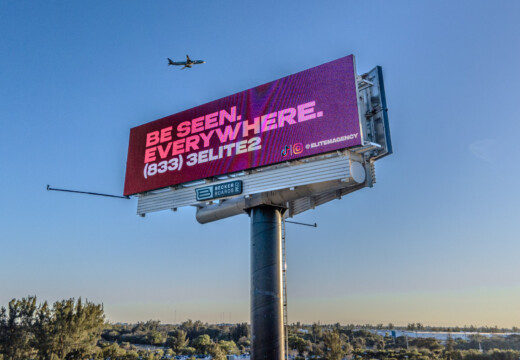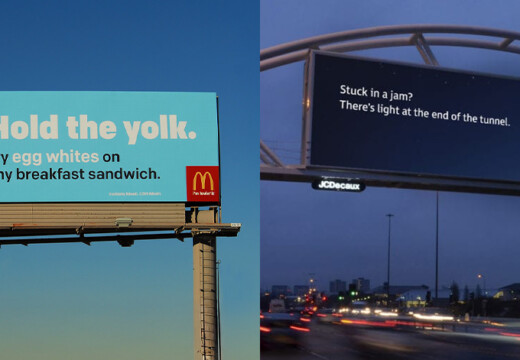When measuring the success of Out-of-Home (OOH) advertising, choosing the right attribution model is key. Here are 5 models to help you track and optimize your campaigns:
- First-Touch Model: Gives all credit to the first billboard exposure. Best for brand awareness and early-stage campaigns.
- Last-Touch Model: Assigns all credit to the last billboard before conversion. Ideal for short sales cycles or direct response campaigns.
- Linear Model: Divides credit equally across all touchpoints. Works well for multi-location campaigns with consistent messaging.
- Time Decay Model: Prioritizes recent exposures by giving them more credit. Great for campaigns where timing matters.
- U-Shaped Model: Splits credit between first and last exposures (40% each) and middle touchpoints (20%). Best for campaigns combining awareness and conversion goals.
Quick Comparison
| Attribution Model | Credit Distribution | Best For | Strength | Limitation |
|---|---|---|---|---|
| First-Touch | 100% to first exposure | Brand awareness, early campaigns | Identifies initial interest | Ignores later interactions |
| Last-Touch | 100% to last exposure | Direct responses, promotions | Ties exposure to action | Misses earlier touchpoints |
| Linear | Equal across all touchpoints | Multi-location campaigns | Balanced view of all steps | Oversimplifies journey |
| Time Decay | More credit to recent exposures | Timed promotions | Highlights recent impact | Undervalues early steps |
| U-Shaped | 40% to first/last, 20% to middle | Awareness + conversion campaigns | Balanced view of key steps | Treats middle steps equally |
Choose based on your campaign goals, length, and audience behavior. For example, First-Touch works for awareness, while U-Shaped balances awareness and conversions. Tools like Blip can help you track and optimize your chosen model.
DOOH Trends and Innovations – with Jill Schnitt, Outdoor …
What Are OOH Attribution Models?
Attribution models help connect billboard exposure to measurable business results by analyzing interactions across both offline and online channels.
Tracking impact involves advanced methods that link location data, website traffic, social media engagement, in-store visits, and purchase behavior. These models aim to address three main challenges in measuring Out-of-Home (OOH) advertising:
- Physical-to-Digital Match: Use device and location data to connect billboard exposure with online or in-store conversions.
- Time-Delay Tracking: Assign credit over a specific timeframe to account for delayed customer responses.
- Multi-Channel Integration: Highlight how OOH campaigns interact with digital ads, social media, and in-store promotions.
Up next, we’ll dive into five specific attribution models that apply these strategies to OOH campaigns.
1. First-Touch Model
The first-touch model focuses entirely on the initial interaction a customer has with your brand. It assigns 100% of the conversion credit – whether that’s a website visit, form submission, or another action – to the very first out-of-home (OOH) ad that captured their attention.
For instance, imagine a commuter notices your billboard during their morning drive. Later that day, they visit your website via a social media link. In this model, the billboard gets all the credit for starting the customer’s journey. This method is simple and effective for identifying which OOH placements drive the most initial interest.
When to use it:
- Campaigns aimed at building brand awareness
- Early-stage marketing efforts focused on tracking first interactions
- Strategies for entering new markets
Next, we’ll explore the last-touch model, which shifts the focus to the final interaction before conversion.
2. Last-Touch Model
The last-touch model gives all the credit for a conversion to the final billboard exposure before a customer takes action. This approach helps identify which OOH placements act as the last push in a customer’s decision-making process.
For instance, imagine a commuter repeatedly passing by your billboard near their office. If they later visit your website, the last-touch model would credit that specific billboard location for the conversion.
When to Use Last-Touch Attribution:
- Products with short sales cycles or quick purchase decisions
- Campaigns designed for direct responses with clear calls-to-action
- Promotions or offers tied to a specific location
Key Points to Keep in Mind: While the last-touch model simplifies attribution, it doesn’t account for earlier billboard views that may have built awareness or influenced consideration. For a fuller picture of your OOH campaign’s impact, consider pairing this model with other attribution methods.
3. Linear Model
The linear model gives equal credit to every touchpoint in a customer’s journey – whether it’s an OOH exposure or a digital interaction. For example, if someone sees three billboards and later clicks on your online ad, each touchpoint (the three billboards and the click) gets 25% of the credit for the conversion.
In roadside OOH campaigns, this approach emphasizes how each billboard consistently contributes to guiding prospects through the sales funnel.
Best suited for:
- Campaigns involving multiple touchpoints where all interactions are equally important
- Scenarios where potential customers encounter several billboards before taking action
- Long buying cycles that span multiple locations
Up next, we’ll explore how the time decay model prioritizes recent exposures for more precise OOH insights.
sbb-itb-2e2e93f
4. Time Decay Model
The time decay model gives more credit to OOH touchpoints that happen closer to the actual conversion, while earlier interactions receive less weight. It uses a "decay curve" to gradually reduce the value of older exposures.
Advantages:
- Highlights the importance of recent interactions in multi-touch campaigns
- Helps marketers optimize the timing of their ads for better results
Best For:
- OOH campaigns with long exposure schedules where the timing of recent ads plays a key role in driving conversions
Up next: the U-shaped model, which offers a blended approach to OOH attribution.
5. U-Shaped Model
The U-shaped (position-based) model gives the most credit to the first and last billboard exposures, while dividing the remaining credit equally among all middle touchpoints.
Key Advantages
- Highlights the importance of first and last exposures for building awareness and driving conversions.
- Distributes partial credit to middle exposures, offering a more detailed view of the customer journey.
- Helps plan the best sequence for multi-location campaigns.
Best Uses
- Campaigns spanning multiple locations, where audiences encounter several ads in a sequence.
- Brand awareness efforts combined with clear calls to action.
- Strategies focused on commuter routes with repeated exposure opportunities.
- Messaging designed to flow sequentially across different billboard sites.
Challenges
Treats all middle exposures as equally important, which may not always reflect their actual impact. Also, it requires accurate tracking to pinpoint the first and last touchpoints.
How to Apply
- Clearly define what counts as the first and last touch, and tailor credit distribution to align with your campaign goals.
- Analyze customer travel patterns to predict how they’ll encounter your billboards.
Up next, we’ll compare these five models to help you determine the best approach for your OOH campaign goals.
Model Comparison Guide
Here’s a breakdown of five attribution models to help you decide which approach fits your out-of-home (OOH) campaign goals.
| Attribution Model | Credit Distribution | Best For | Key Strength | Primary Limitation |
|---|---|---|---|---|
| First-Touch | All credit goes to the first billboard exposure | Brand awareness, top-of-funnel activities | Identifies which placements spark initial interest | Ignores the role of follow-up exposures |
| Last-Touch | All credit goes to the last billboard before conversion | Direct response campaigns, promotions | Directly ties exposure to conversion | Misses earlier touchpoints that build awareness |
| Linear | Credit is evenly shared across all exposures | Multi-location campaigns, consistent messaging | Offers a balanced view of all touchpoints | Oversimplifies customer journey complexity |
| Time Decay | More credit to recent exposures, less to earlier ones | Short-term promotions, event marketing | Highlights the importance of recent interactions | May undervalue early touchpoints |
| U-Shaped | 40% to first and last exposures, 20% to the middle | Campaigns focused on awareness and conversion | Balances early engagement and final action | Might not fully account for mid-journey impact |
Matching Models to Campaign Needs
To choose the right model, consider these factors:
- Campaign Length: For campaigns under two weeks, go with First-Touch or Last-Touch. For longer campaigns, Linear or U-Shaped models work better.
- Geographic Reach: Multi-location campaigns benefit from Linear or Time Decay models, which provide regional insights.
- Objectives:
- For brand awareness, First-Touch or U-Shaped models are ideal.
- For direct response, opt for Last-Touch or Time Decay.
- For a mix of both, Linear or U-Shaped models strike a balance.
Define your OOH conversion goals, set an attribution window, and account for seasonal traffic patterns. Monitor both immediate and delayed responses to ensure the model aligns with your campaign’s performance.
Using Attribution with Blip
Once you pick an attribution model, Blip provides the real-time data you need to make it work effectively.
Blip supports First-Touch, Last-Touch, Linear, Time Decay, and U-Shaped attribution models. With its platform, advertisers receive daily impression counts and average CPM by location. Plus, its pay-per-play billing allows campaigns to run with budgets starting as low as $20 per day – no long-term contracts required. The platform’s bidding engine refreshes every 10 minutes, ensuring live reports are always up-to-date for quick adjustments to budgets and locations.
Real-Time Optimization
Blip’s bidding engine updates every 10 minutes, feeding daily impression counts, location-specific CPM, and performance data into live reports. This lets you adjust budgets, locations, and timing on the fly to align with your chosen attribution model.
Budget Optimization and Attribution Testing
Blip’s flexibility – no minimum spend and adjustable daily budgets – makes it simple to test different attribution strategies.
"Working with Blip has given Mr. Charlie’s the momentum to get our new location on the map while accelerating growth for our original location" – Paul Willey, Owner of Mr. Charlie’s Chicken Fingers
"Billboards are one of the most impactful ways to advertise, and with Blip, you spend a fraction of what you would end up paying elsewhere." – Ray Bowens, Founder of Hashtag‑Vape
Conclusion
Choosing the right attribution model can help you get the most out of your OOH advertising ROI. Blip advertisers have successfully increased visibility for new locations and driven growth at established ones. Align your attribution model with your specific goals, consider the distinct influence of OOH campaigns, and monitor both short-term and long-term results. Make it a habit to review your performance data and tweak your approach to keep improving outcomes.


